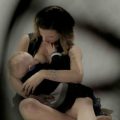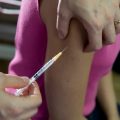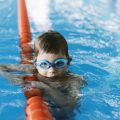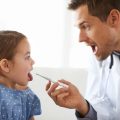"Mommy, it seems, will puke me now," -the unfortunate green child looked at me with eyes full of horror. My eyes instantly became the same - after all we sat on the public bus, which was shaking on the broken road towards the sea. Benefit the driver was understanding, gave us the opportunity to breathe. But it could all end very sad - before my eyes a whole series of slides swept, how the child is sick on the floor and we are planted under a friendly condemning hubbub. What should we do to avoid getting into such situations? The answer is only one - to make sure that the child is not rocking. Neither in the plane, nor in the car, nor in the bus. How to achieve this, says Anna Levadnaya, a pediatrician, Ph.D., a mother of two children, an active blogger and author of the book "Doctor_annamama, I have a question: How to preserve the health of the child."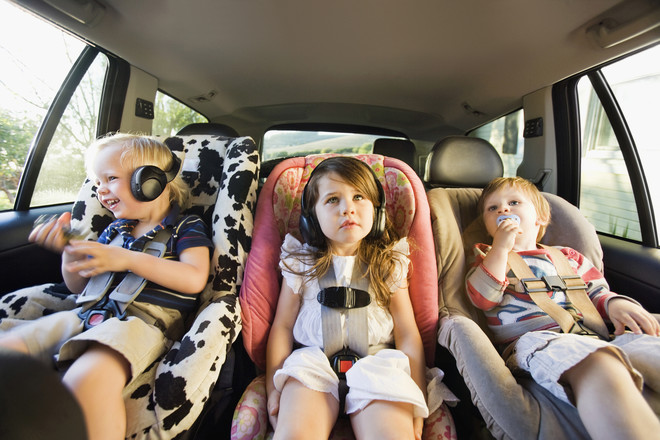 Photo: GettyImages First of all, who is at risk. Most often, seasickness occurs in children from 2 to 12 years, mostly girls. Usually, with age, the illness passes, and the child moves the journey more easily. Maritime disease is not only nausea. With her attack only begins. Plus, cold sweat, weakness, drowsiness, dizziness, increased salivation, loss of appetite. Ends with all vomiting (small children become pale, restless, yawn or cry), after which it becomes easier. But for a short time. If your child still fell into the ranks of the sick, it will not hurt to train his vestibular apparatus. It's not difficult: you can swing on a swing, increasing sessions of "pokatushki", on carousels - only not on the most extreme. In addition, you need to play sports. And there is a special gymnastics for the vestibular apparatus - it can be found on the net. 15 commandments in the case of "pitching" 1. During the trip, stop more often and walk for 10-15 minutes outdoors. If the child has already started nausea, then it is worth getting out of the car and putting it. Let him lie down with his eyes closed on his back for a few minutes. Do not overfeed your child before the trip, but do not leave hungry. Offer him some water on the road. For 1.5 hours before departure (regardless of the mode of transport), the child needs a light snack, and avoid fatty and flour dishes. Thanks to this, the child will not experience hunger, which aggravates seasickness. Sweet before the trip is also better not to eat. During the movement you need to swallow more often. Give the child a cold sweet drink, such as compote or iced tea, and explain that it should be drunk in small sips. You can offer baby mint candies. In the car, try to distract the child from a feeling of nausea: listen to the radio, sing songs, talk with the child, look out the window. You can conduct a spot massage of the brush: this will help the child to switch attention.
Photo: GettyImages First of all, who is at risk. Most often, seasickness occurs in children from 2 to 12 years, mostly girls. Usually, with age, the illness passes, and the child moves the journey more easily. Maritime disease is not only nausea. With her attack only begins. Plus, cold sweat, weakness, drowsiness, dizziness, increased salivation, loss of appetite. Ends with all vomiting (small children become pale, restless, yawn or cry), after which it becomes easier. But for a short time. If your child still fell into the ranks of the sick, it will not hurt to train his vestibular apparatus. It's not difficult: you can swing on a swing, increasing sessions of "pokatushki", on carousels - only not on the most extreme. In addition, you need to play sports. And there is a special gymnastics for the vestibular apparatus - it can be found on the net. 15 commandments in the case of "pitching" 1. During the trip, stop more often and walk for 10-15 minutes outdoors. If the child has already started nausea, then it is worth getting out of the car and putting it. Let him lie down with his eyes closed on his back for a few minutes. Do not overfeed your child before the trip, but do not leave hungry. Offer him some water on the road. For 1.5 hours before departure (regardless of the mode of transport), the child needs a light snack, and avoid fatty and flour dishes. Thanks to this, the child will not experience hunger, which aggravates seasickness. Sweet before the trip is also better not to eat. During the movement you need to swallow more often. Give the child a cold sweet drink, such as compote or iced tea, and explain that it should be drunk in small sips. You can offer baby mint candies. In the car, try to distract the child from a feeling of nausea: listen to the radio, sing songs, talk with the child, look out the window. You can conduct a spot massage of the brush: this will help the child to switch attention.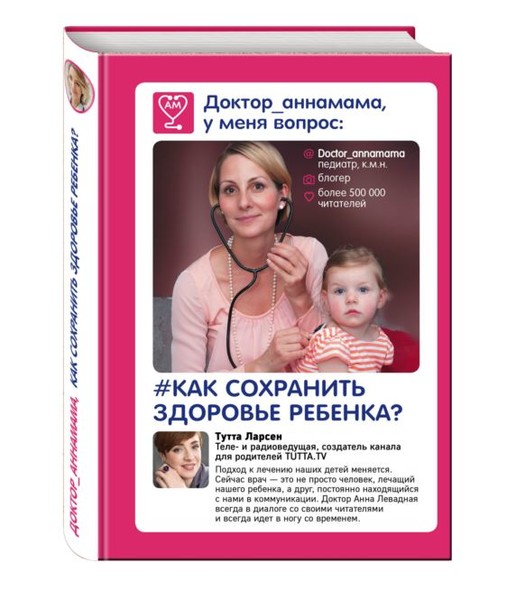
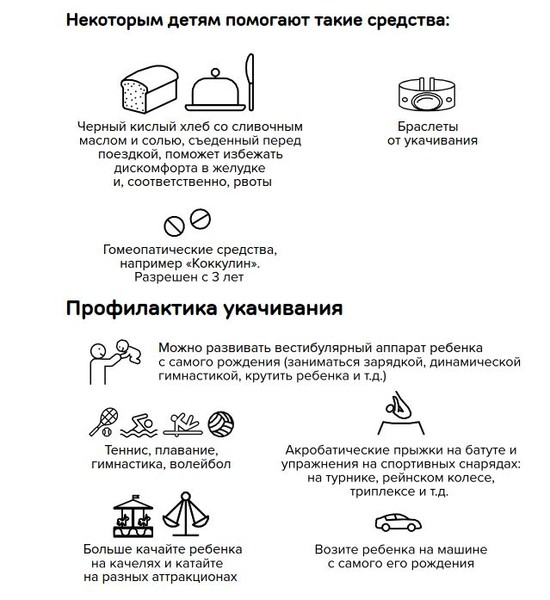 1/2Photo: Eksmo Publishing HousePhoto:Publishing house "Eksmo"6. You need to look out the window at distant objects (trees, houses, clouds), and not play or read.7. Provide access to fresh air in the car (open the window), and if it is hot, turn on the air conditioner.8. Do not smoke in the car, even when the child is not there.9. Do not use car air fresheners.10. If the child gets motion sickness, it is better to drive while he is sleeping (that is, during the day or night sleep).11. You need to limit head movements: it is better for it to rest on something: a headrest, a bolster, etc.12. Apply a damp cloth to the child's forehead: this will ease his condition.13. If possible, seat the child in a place where motion sickness is less common: - in the middle of the car, and not closer to the door. It is better for the child to look ahead and into the distance, and not out the side windows; - on an airplane - near the wing; - on a train - by the window in the direction of travel; - on water transport - on the deck and closer to the axis of the vessel, while looking at the water and the horizon. 14. Always have a vomit bag at hand. 15. Of the medications, the following will come to the rescue: 1 tablet - 50 mg Dramamine, Aviamarin, Ciel before meals and 30 minutes before the trip (the active ingredient is dimenhydrinate). Medicines cause a number of side effects: drowsiness, dry mouth and nose, slightly blurred vision. In addition, they have an anti-allergic effect. If the trip is short, remember that the effect of the drug will continue after the child gets out of the car. Before taking any medication on a trip, carefully read the instructions for its use and be sure to consult a doctor. Read more:
1/2Photo: Eksmo Publishing HousePhoto:Publishing house "Eksmo"6. You need to look out the window at distant objects (trees, houses, clouds), and not play or read.7. Provide access to fresh air in the car (open the window), and if it is hot, turn on the air conditioner.8. Do not smoke in the car, even when the child is not there.9. Do not use car air fresheners.10. If the child gets motion sickness, it is better to drive while he is sleeping (that is, during the day or night sleep).11. You need to limit head movements: it is better for it to rest on something: a headrest, a bolster, etc.12. Apply a damp cloth to the child's forehead: this will ease his condition.13. If possible, seat the child in a place where motion sickness is less common: - in the middle of the car, and not closer to the door. It is better for the child to look ahead and into the distance, and not out the side windows; - on an airplane - near the wing; - on a train - by the window in the direction of travel; - on water transport - on the deck and closer to the axis of the vessel, while looking at the water and the horizon. 14. Always have a vomit bag at hand. 15. Of the medications, the following will come to the rescue: 1 tablet - 50 mg Dramamine, Aviamarin, Ciel before meals and 30 minutes before the trip (the active ingredient is dimenhydrinate). Medicines cause a number of side effects: drowsiness, dry mouth and nose, slightly blurred vision. In addition, they have an anti-allergic effect. If the trip is short, remember that the effect of the drug will continue after the child gets out of the car. Before taking any medication on a trip, carefully read the instructions for its use and be sure to consult a doctor. Read more:

Making Money with Desserts: Success Stories
Evgeniya Polischuk (Fedutinova) instagram:@evgeniyafedutinovavk.com/janeshomebaking– It all started with baking for family and friends. Gradually, I started posting photos of my baked goods on Instagram – and orders started coming in. I made my first custom-made cake on October 13, 2014, and a little earlier I started making macaroons and cupcakes. You could say that the business “found me”, I am very […]

Soups are cold recipes with photos
Cold cucumber soup with yogurt and lemonsorbet from the chef of the restaurant La Taverna Alexander Zhurkin Photo: Getty Images Ingredients: Plain yoghurt – 125 g Cucumber – 150 g Lemon/lime sorbet – 50 g Cocktail shrimp – 24 g Fresh ginger juice – 1 g Lime juice – 5 g Fresh orange juice – 5 g Parsley – 1 g Pink pepper – 1 g Watercress – […]

barbeque kebab
Pork tenderloin in glaze Photo:Dmitry Bayrak/dbstudioPreparation time: 20 minutes + marinating time.Calories: 454 kcal per serving.For 4 servings: 4 pork tenderloins (approximately 300 g each), 1 onion, 2 cloves of garlic, 1 tsp. lemon zest, 1 tsp. lemon juice, a pinch of ground cumin, coriander and turmeric, 1 tbsp. vegetable […]

Pierre Duacan: dietary recipes: Ducane diet
Beetroot soup Photo:Season’S, Luxury Hotels RepresentationYou will need:· Boiled beetroot – 60 g· Fresh cucumbers – 20 g· Red radish – 20 g· Green onions – 10 g· Egg – 1 pc.· Drinking mineral water – 200 g· Salt – 1 gPreparation:· Boil the egg and beetroot.· Grate the cucumbers, radish and part of the beetroot. Put everything […]
